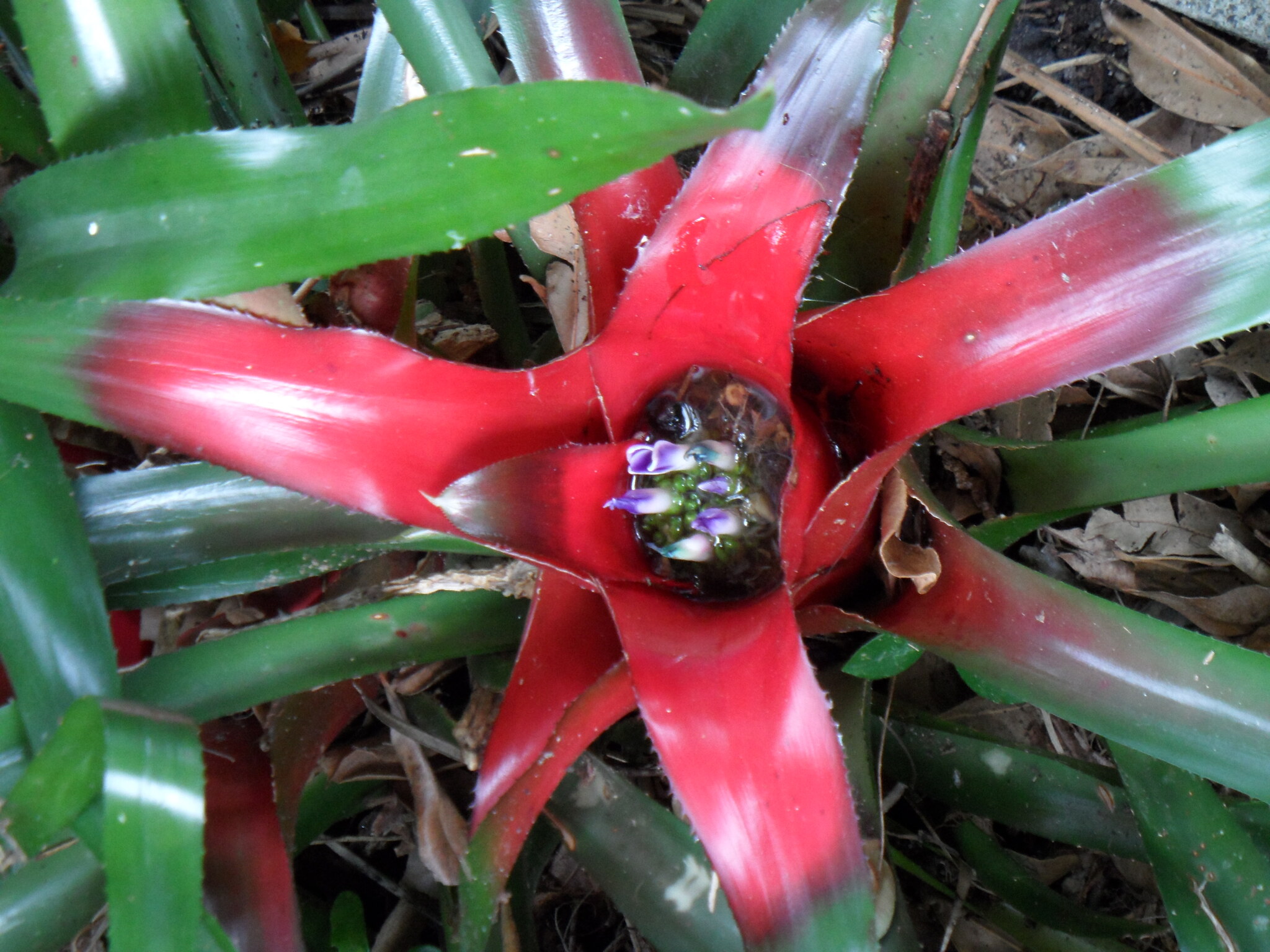
Named after the Russian botanist Edward von Regel (1815–1892).
Leaves in a dense rosette; sheaths usually large and distinct; blades from rounded, sharply pointed to long, attenuate. Scape short, completely enclosed. Inflorescence central, sunk in the centre of the rosette, simple in most species, very densely head-like; flowers stalked; sepals asymmetric; petal blades spreading, acuminate, violet, blue, white, or rarely red; stamens and pistil included. Fruit a many-seeded berry.
Ornamental plants grown mainly for the colouration of their leaves. There are two subgenera: Hylaeaicum from the Amazon Basin (rarely in cultivation), and the popular Neoregelia from eastern Brazil.
Those species from the Peruvian Amazonian area, with petals free (subgenus Hylaeaicum) are rarely grown in south-eastern Australia and are not included in the key. Species from eastern Brazil (subgenus Neoregelia) have petals joined to some extent, even if only for 2-3 mm, with many being common in cultivation in south-eastern Australia.
Seed or offsets.
Inflorescence sunk in vase-like 'tank' or leaf rosette; flowers stalked. cf. Nidularia.
97 species from tropical and warm South America.
Key: Those species from the Peruvian Amazonian area, with petals free (subgenus Hylaeaicum) are rarely grown in SE Australia and are not included in this key. Species from E Brazil (subgenus Neoregelia) have petals joined to some extent, even if only for 2–3 mm, with many being common in cultivation in SE Australia.
Source: (2005). Bromeliaceae. In: . Horticultural Flora of South-eastern Australia. Volume 5. Flowering plants. Monocotyledons. The identification of garden and cultivated plants. University of New South Wales Press.
